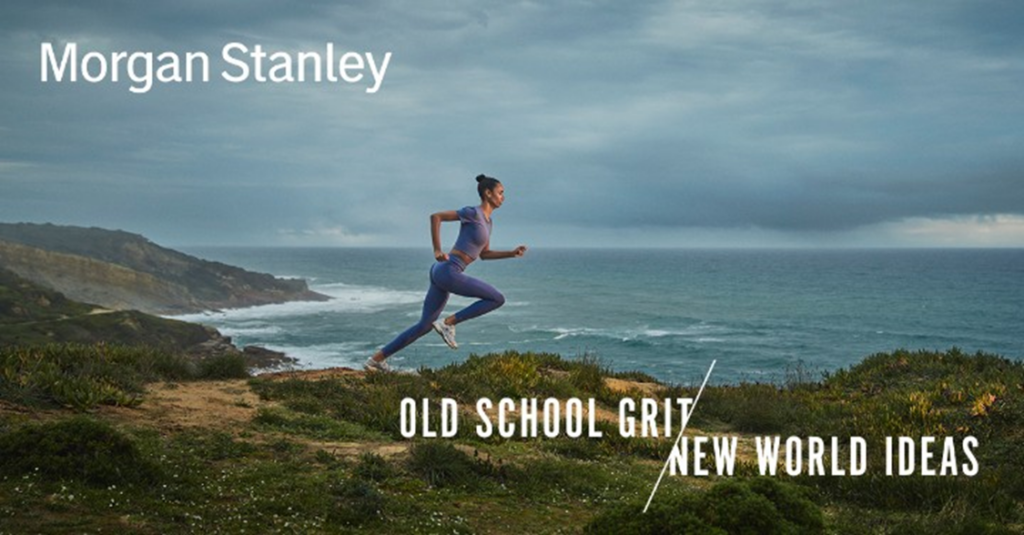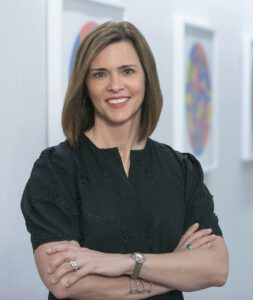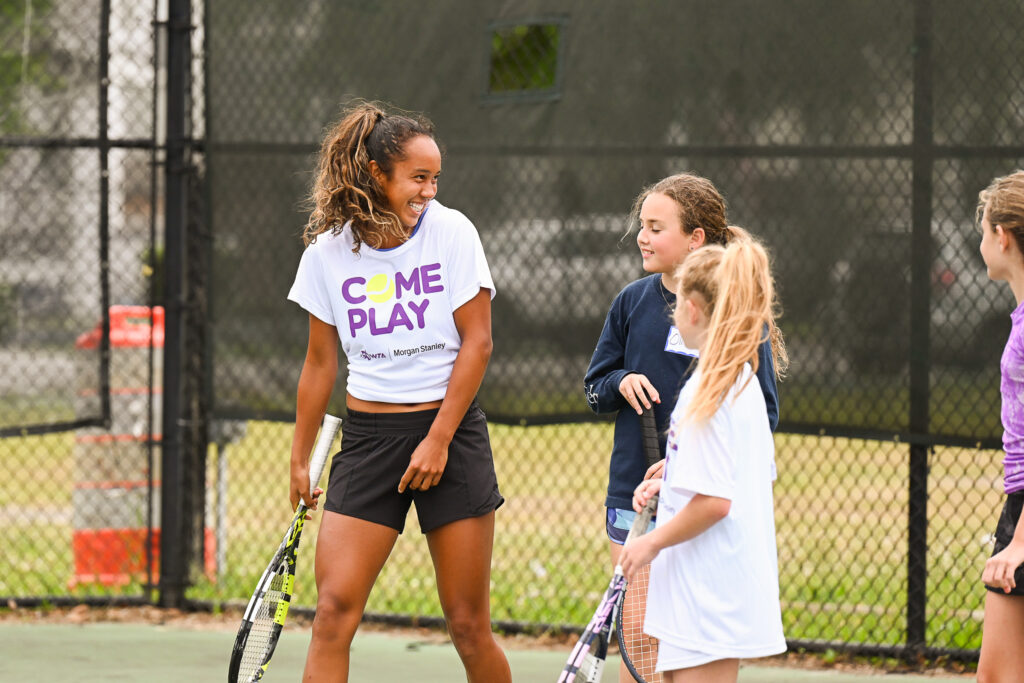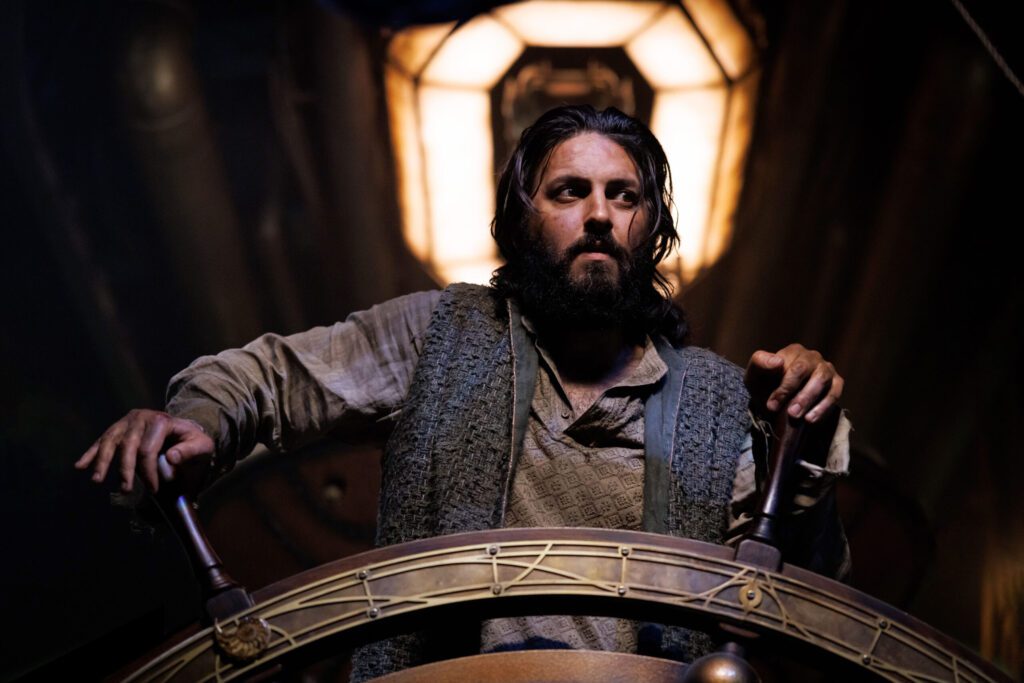
Chief Marketer recently spoke with Morgan Stanley CMO Allice Milligan, our latest Marketers on Fire pick, about her atypical journey to the C-suite, philosophies that guide her, how she markets to younger customers, and innovative partnerships at the finance company. This week we’re bringing you part two of our discussion, which covers the brand’s social media strategies, leveraging emerging technologies, AI-driven efficiencies and cultivating talent.
CM: What are some collaborations under Morgan Stanley’s “Old School Grit, New World Values” rebranding?
 Alice Milligan, CMO at Morgan Stanley: Going back to that concept of women controlling $11 trillion of personal wealth… We also saw that women’s sports have traditionally received 1-2% of the total sports investment. We wanted to show that we were supportive of leveling the playing field, so there were two things we did there. One, we brought on 21-year-old women’s tennis pro, Leylah Fernandez, as our brand ambassador. It was a clear deviation from our traditional ambassadors, who have been male and primarily in golf.
Alice Milligan, CMO at Morgan Stanley: Going back to that concept of women controlling $11 trillion of personal wealth… We also saw that women’s sports have traditionally received 1-2% of the total sports investment. We wanted to show that we were supportive of leveling the playing field, so there were two things we did there. One, we brought on 21-year-old women’s tennis pro, Leylah Fernandez, as our brand ambassador. It was a clear deviation from our traditional ambassadors, who have been male and primarily in golf.
Then we launched our partnership with the Women’s Tennis Association that was focused on not just getting into a new sport, but on fostering inclusivity and expanding access to the game of tennis. Through that partnership, we became the exclusive presenting partner of the WTA Come Play initiative, which utilizes tennis to positively impact communities and encourage girls of all ages and abilities to lead healthy and productive lives on and off the court.
That partnership with the WTA has had an incredible impact on how we’re perceived both externally and internally. In fact, 90%-plus of high-net-worth tennis enthusiasts reported a much more favorable perception of our brand because of the partnership that we established. And we continue to evolve that. We created a financial empowerment program for the athletes and their coaches, called What Moves You, about providing leadership skills, financial guidance, tools and empowerment, and coaching for the athletes, so that they can be successful not only on the court but off the court, when their career is over.
CM: Can you talk more about how you’re engaging the next generation of customers and consumers?
AM: As a firm, we [previously] placed a lot of emphasis on traditional marketing and face-to-face channels. We’ve tried to expand, evolve and grow the way that we talk to our clients. For example, social media became a much bigger platform for us and way to connect with our clients and prospects. We overhauled our whole social media strategy by prioritizing publishing social-first content versus repurposing content. We standardized the firm’s look and feel across the platforms. We humanized the brand by showing more employees and our leaders in different ways and in more casual settings and environments.
We started to do more collaboration with our brand ambassadors and with the sponsorships that we had, doing collaboration posts, using Instagram stories, and doing more things that would appeal to different audiences and showcase the work that we were doing. Through just those things, we saw a significant increase in our followers, 30%-plus in new followers and 65%-plus increase in our engagements, 2022 versus 2023. (We use shares, clicks and views as our engagement metrics).
CM: How are you leveraging emerging technology to engage with them?
AM: We just named a new Head of Firmwide AI, Jeff McMillan, to create a cohesive approach and strategy, both internally with our employees as well as externally. Then within the marketing sphere, we’ve started to explore different ways to leverage new technologies for content and video creation. Externally, we unveiled a 3D billboard timed to the U.S. Open and launched an AR experience at the Players Championship, titled Tour Through Time. It brought nine iconic moments from previous Players Championships to life in an AR experience that you could do either at the Players, if you were present, or through the PGA’s mobile app. We also used our brand ambassador Justin Rose to narrate the tour… and take you through those iconic holes.
We also partnered with CNN and Courageous, their brand agency, to do an activation called Creating Space, where we created a prototype space suit for women. There was a space mission that was scrapped because they didn’t have enough space suits to fit people of smaller stature and women. And so as a result of that, we said, how do we get involved in this? How do we push the envelope to make something accessible for women and for underrepresented groups?
We brought the prototype space suit to an activation that we did in Times Square, where we used AR to go through the exhibit, which had a series of spacesuits and how they evolved over time. And you could get your AR photograph in our space suit on our billboard in the middle of Times Square. That brought a whole new set of consumers to the brand. Then we leveraged that to work with our equity research team and talk about the importance of the space economy, what it meant in terms of investing in the future, and how women could take a more active role in being part of that economy.

CM: How are your employees using generative AI at the company?
AM: In terms of marketing, we’ve been focused on two fronts. One has been how to enable our marketers to be more efficient and effective. I mentioned things like creation of content, imagery, video and leveraging that to help us be more efficient in how we operate and how we work, and how that flows through all of the different channels that we need to market in.
And then from an external standpoint, it’s been similar… People get content in different ways through different platforms, so sometimes that’s been a challenge. Take, for example, an equity research study, 400 pages long, that was developed for an analyst to use. And taking that content and the core learnings and information, the things you need to know, and putting it in a format that is usable by an individual investor who may not be as sophisticated as that analyst. Getting their information from a social media channel is very different. So, we’ve been starting to look at ways that AI can help us create long-form, short-form, digestible bytes of information that bring that important content to the surface, versus having someone have to cull through a 400-page analysis.
CM: What are some of the biggest challenges you’re facing from a marketing perspective?
AM: Talent is one of the biggest challenges we face, because your marketing, your innovation, your analytics are only as good as the people who you have on your team. As I said, Morgan Stanley tended to not be a big marketing firm before. I came into the role, and we’ve spent a lot of time doing things to try and attract and retain the top talent. In my first 90 days, one of the goals we set was to get Morgan Stanley to be the employer of choice of the next generation of marketers. We created a marketing-focused summer intern program, where we went out to nontraditional schools focused on marketing and marketers to create a very unique program.
We created a newsletter called Marketing Matters, created by the folks on the team, that has best practices, campaigns that worked and didn’t work, and industry techniques. We have a host of lunch-and-learns where external experts come in… and then we also created what we call a mobility site, where we centralize all of the marketing roles on the team. So you can see any marketing role that’s recruiting, and whether you’re internal or external, you see all the roles in one place. You have the opportunity to put in or post for those roles to gain incremental and new experience, whether it’s at the firm-wide level or at the business-unit level. It’s really important to focus on bringing that talent into the firm, but then retaining talent once they’ve gotten there.
CM: Do you have any advice for women marketers in finance?
AM: The first thing I would say is lean into your strengths. As you think about marketing—and especially in financial services, if that’s the space you love—lean into those assignments and roles. Learn about every aspect of marketing. Early in your career, get experiences in a bunch of different areas to understand what you’re good at and what you’re passionate about. That will help you as you move up through the ranks to identify the right roles and assignments that are going to enable you to shine.
The next thing is to have confidence in yourself. I found that was one of the hardest things. Early in my career, most of the time I’d be the only woman in the room, and I would spend a lot of time looking at what others were good at… Then I realized: I’m the only person who talks about the customer, what the customer needs and knows the customer inside and out. And that’s an asset to this group.
The final thing is this: Be the CEO of your own calendar. Sometimes, time is the most important and precious asset that you have, and it’s one that you actually have control of. I spend a lot of time looking at what I’m spending my time on. Is it the things that are going to drive the business the most, or not? Do I need to be here? Or can I delegate that to somebody on my team? What is this person setting up time with me for? What’s the purpose? What’s the outcome? What are we going to talk about? What decisions are going to be made?
I also make sure that I schedule in time to think on that calendar, whether it’s think strategically about the business in the area or think about the opportunities across the marketing functions, or the business functions that my team is engaged in or responsible for. If you’re a marketer, losing sight of the customer is the worst thing that can happen. So I’ll use that time to go on our website and into our mobile app to see how things are working. What is the customer experience? What are they seeing? How are we messaging it? What imagery is there? And I do that on our competitors’ sites as well… Taking time as an important asset and using it in a way that’s intentional and planful is important.



 Network
Network

